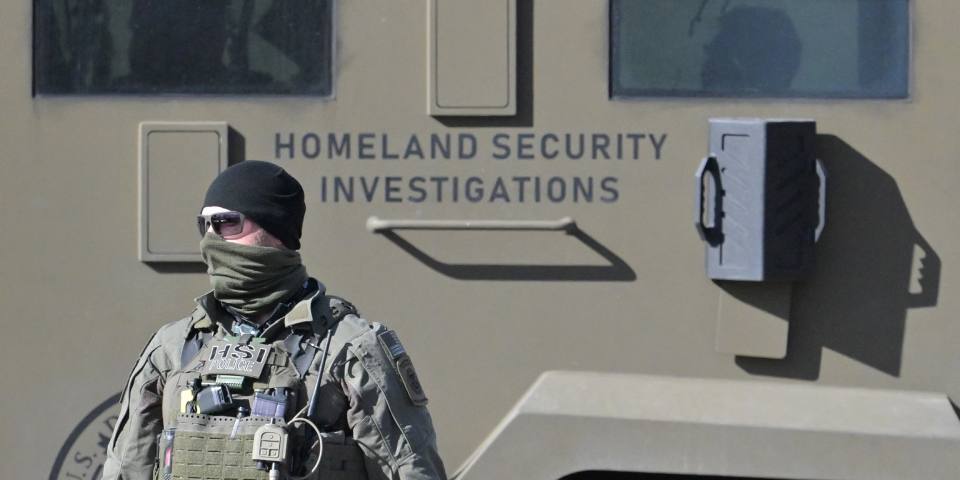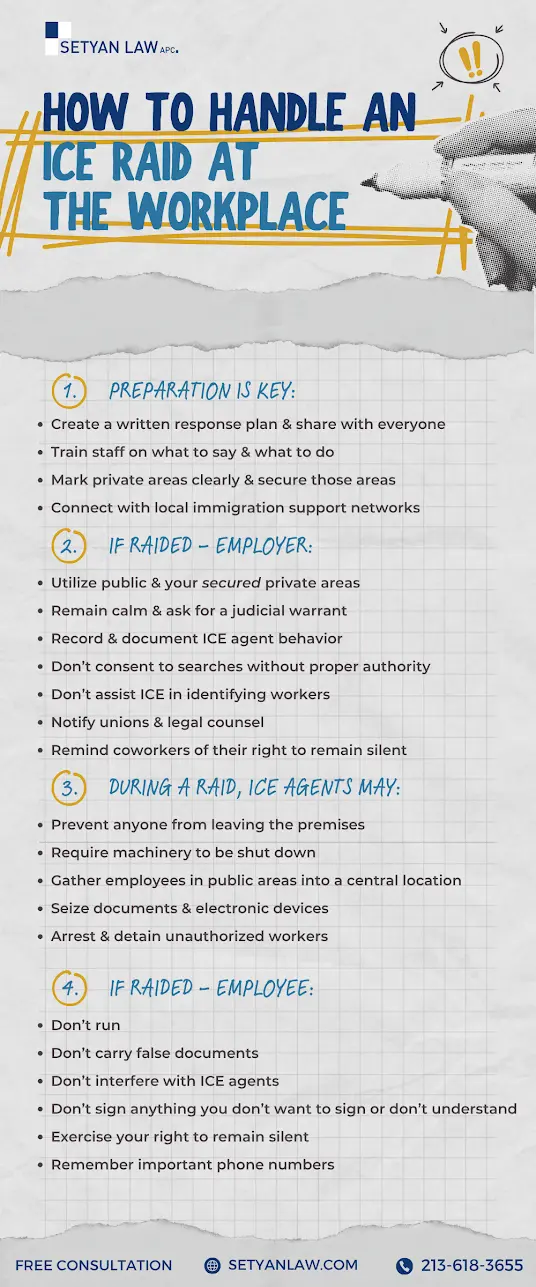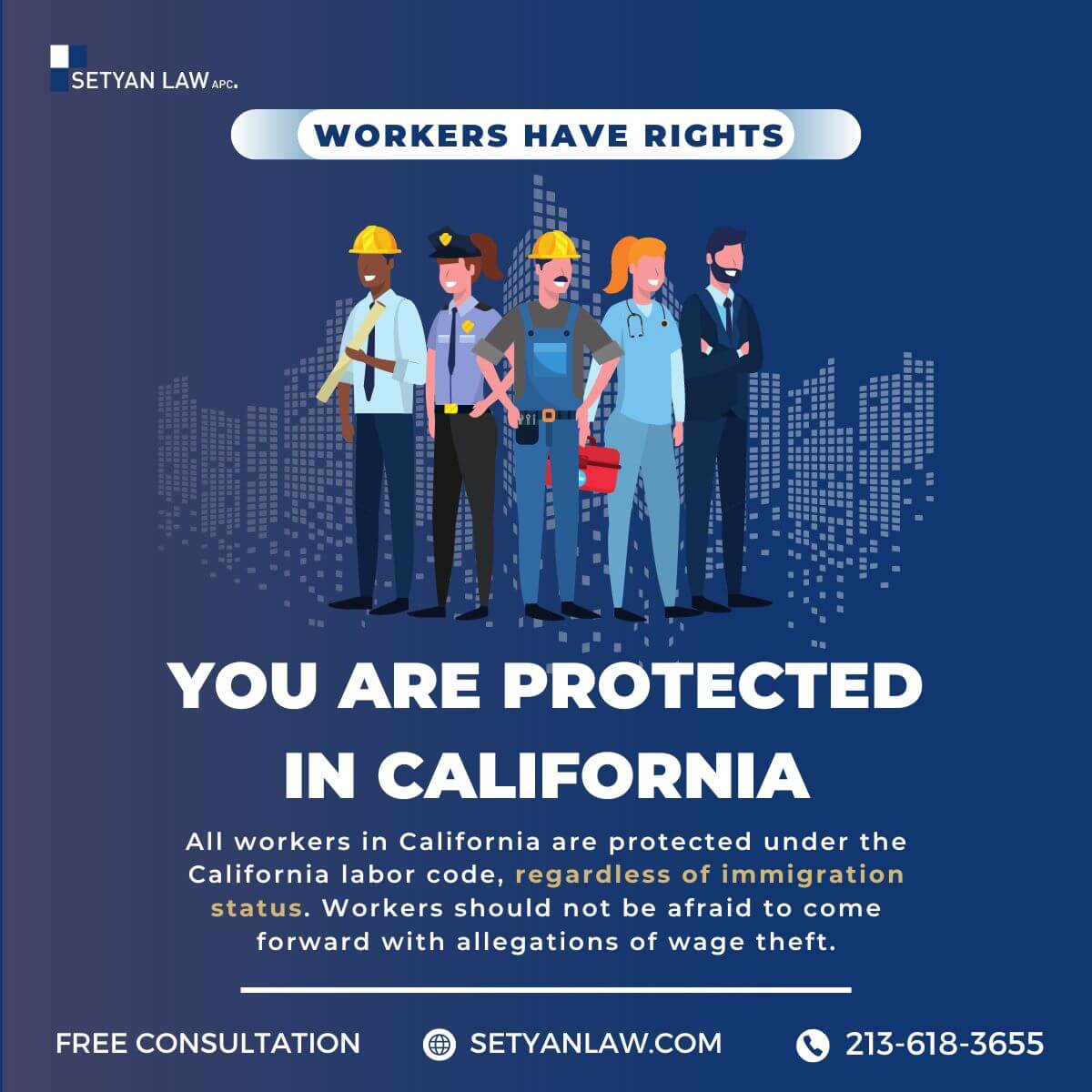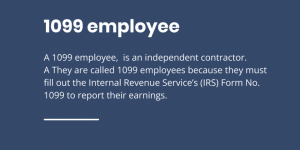Updated June 26, 2025
How to Survive an ICE Raid: Essential Workplace Protection Guide
ICE raids can disrupt your entire business operations in a matter of minutes, leaving both employers and employees confused, frightened, and vulnerable.
Without proper preparation, these unexpected enforcement actions often lead to workplace chaos, potential rights violations, and devastating consequences for your team. Unfortunately, many businesses only learn about their legal responsibilities and options after it's too late.
When Immigration and Customs Enforcement (ICE) agents arrive at your workplace, knowing exactly what to do—and what not to do—can make a critical difference in protecting both your business and your employees. Every employer has legal rights and responsibilities during these encounters, regardless of their workforce composition.
This comprehensive guide will walk you through essential steps to prepare for, respond to, and recover from ICE enforcement actions at your workplace. By understanding the different types of immigration enforcement activities and implementing proper protocols, you can navigate these challenging situations while upholding both legal compliance and workplace dignity.
Understand the Types of ICE Actions
Immigration enforcement comes in several forms, and each requires a different response from employers. Understanding the distinct types of ICE actions helps you prepare appropriately and protect your legal rights.
What is an I-9 audit?
An I-9 audit begins when ICE serves your business with a Notice of Inspection (NOI). This document formally requests your I-9 employment eligibility verification forms and supporting documentation [1]. Unlike surprise raids, employers typically receive three business days to produce the requested materials after receiving an NOI [2].
During an audit, ICE may request:
- All I-9 forms for current and recently terminated employees
- Payroll records and employee lists
- E-Verify confirmations (if applicable)
- Business ownership documentation
- Contracts with staffing agencies [3]
Importantly, you have the right to consult with legal counsel before responding to the NOI. The ICE auditor will inspect your I-9 forms for compliance, looking for both technical violations (which you'll have 10 days to correct) and substantive violations [4].
If violations are found, you may face civil penalties ranging from $281 to $2,789 per improper I-9 form. Furthermore, employers found to have knowingly hired unauthorized workers could face fines up to $27,894 per violation and potential criminal charges [5].
What happens during a workplace raid?
Workplace raids occur without warning and are fundamentally different from audits. In this scenario, ICE agents arrive at your business unexpectedly, often surrounding the building and sometimes using aerial surveillance [6]. These operations typically follow an investigation suggesting unauthorized workers are employed at your location.
For a raid to be legal, ICE must possess a valid judicial search warrant signed by a judge or magistrate – not merely an administrative warrant [5]. The judicial warrant must specifically describe the areas to be searched and items to be seized.
During a raid, ICE agents may:
- Prevent anyone from leaving the premises
- Require machinery to be shut down
- Gather employees in a central location
- Seize documents and electronic devices
- Arrest and detain unauthorized workers [7]
After completing the raid, agents should provide an inventory of seized property and a list of arrested employees [4]. These operations typically target industries with historically higher rates of undocumented workers, such as hospitality, agriculture, manufacturing, and construction [8].
When ICE targets specific individuals
Sometimes ICE visits workplaces seeking particular individuals rather than conducting a broader operation. These targeted enforcement actions focus on non-citizens with specific circumstances, such as serious criminal convictions or outstanding removal orders [9].
During these actions, ICE agents arrive at your business looking for specific employees. However, they may question and potentially detain other workers they encounter – known as "collateral arrests" [5]. This creates significant risk for all employees present during such operations.
For these targeted actions, ICE does not need a warrant to enter public areas of your business. Nevertheless, they cannot access private employee-only areas without either your consent or a valid judicial warrant [10]. Designating and clearly marking which areas are public versus private becomes essential in managing these encounters.
How to Prepare Before an ICE Raid
Proactive preparation is your strongest defense against the chaos of an unexpected ICE raid. Taking specific steps now can significantly reduce panic, protect rights, and maintain business continuity if immigration enforcement arrives at your workplace.
Create a written response plan
Developing a comprehensive written response plan is essential for managing ICE encounters effectively. First, assemble a designated ICE response team that includes:
- Front desk staff/receptionists trained to interact professionally with agents
- Senior management or company leadership
- Legal counsel (immigration and employment attorneys)
- Security or operations personnel
- A designated company spokesperson
This team should have clearly defined roles and responsibilities during different types of ICE visits. Additionally, create detailed protocols outlining exactly what each team member should do, from the moment ICE agents arrive through the aftermath of their visit. Practice your response protocols regularly, treating them with the same seriousness as fire drills.
Train staff on what to say and do
Proper training helps prevent employees from inadvertently surrendering rights or escalating tensions during an ICE encounter. Key training elements should include:
- Instructions to remain calm and professional
- Clear direction to NOT run away, as this could give ICE legal grounds for arrest
- Scripts for receptionists to politely inform agents, "Our company policy is to contact management and legal counsel"
- Guidelines on requesting and verifying agent credentials
- Emphasis that employees have the right to remain silent and consult an attorney
- Clarification on the difference between public and private areas of the workplace
- Documentation procedures for recording encounters
Moreover, provide comprehensive "Know Your Rights" materials to all employees. This training should be repeated periodically to ensure all staff members, including new hires, understand proper procedures.
Mark private areas clearly
ICE agents cannot legally enter private areas of your business without a valid judicial warrant or your consent. To establish these boundaries:
- Post visible signs reading "Private" or "Employees Only" on doors to non-public spaces
- Keep doors to private areas closed and locked when possible
- Create a written policy specifically designating which areas are closed to the public
- Train all employees to understand these designations
This clear demarcation helps prevent accidental consent to searches and provides legal grounds for restricting agent access to certain areas of your facility.
Connect with local immigration support networks
Building relationships with immigration support organizations before an enforcement action occurs provides crucial resources during and after ICE encounters. These networks can offer:
- Rapid response support during raids
- Legal assistance for affected employees
- Family support services
- Guidance on documentation and compliance
Many communities have established rapid response hotlines that can be contacted immediately if ICE appears at your workplace. These networks deploy trained observers, legal support, and community assistance when enforcement actions occur. For this purpose, maintain a list of local immigration support organizations and their contact information in your response plan.
Above all, remember that preparation is not merely about legal compliance—it's about protecting your business operations and supporting your workforce through potentially traumatic situations.
What to Do When ICE Arrives
When ICE agents unexpectedly appear at your door, the first moments critically shape how the encounter unfolds. Immediate, informed responses can protect both your business and your employees' rights.
Identify if agents are in public or private areas
The distinction between public and private areas fundamentally determines ICE's authority within your workplace. ICE agents can legally enter and remain in public areas without your permission or a warrant. These public spaces typically include:
- Restaurant dining areas
- Business lobbies and waiting rooms
- Parking lots
- Any area generally open to customers or visitors
Conversely, private areas require specific legal authority for ICE to access. These spaces usually encompass:
- Employee-only sections
- Kitchens and production areas
- Storage rooms and offices
- Break rooms
To clearly establish these boundaries, consistently maintain "Private" or "Employees Only" signage, keep doors to restricted areas closed or locked, and establish written policies about visitor access.
Ask for a judicial warrant
Once ICE agents arrive, politely but firmly ask to see their credentials and determine why they're at your workplace. If agents attempt to enter private areas, immediately request to see a judicial warrant.
A valid judicial warrant must:
- Be signed by a judge (not an immigration officer)
- State "U.S. District Court" or a state court at the top
- Specifically identify your business address
- Describe the areas to be searched or persons to be arrested
- Be recently dated (typically within the past 14 days)
Importantly, administrative warrants (Forms I-200 or I-205) that say "Department of Homeland Security" at the top do not authorize entry into private areas without consent. If presented with only an administrative warrant, you can state: "This is a private area. You cannot enter without a judicial warrant signed by a judge. Do you have a judicial warrant?"
Do not consent to searches without proper authority
Without a valid judicial warrant, ICE needs your permission to enter private areas or conduct searches. You have the legal right to decline consent. Remember these key principles:
- Remain professional and avoid confrontational behavior
- Clearly communicate if you do not consent to a search by saying: "I do not consent to your search or to you entering this private area"
- Unless agents possess a judicial warrant, you are not required to:
- Confirm if a specific employee is working that day
- Take agents to an employee named in an administrative warrant
- Help agents identify workers by immigration status
- Answer questions about employees
If ICE presents a valid judicial warrant, you must allow access only to the specific areas mentioned in the warrant. Document any searches that exceed the warrant's scope by voicing objections and taking notes.
Remember that even in public areas, ICE can use anything in "plain view" as evidence, including visible documents and computer screens. Encourage employees to secure sensitive materials, especially in areas accessible to visitors.
How to Respond During the Raid
Once an ICE raid begins, your next actions shape how the situation unfolds throughout your workplace. Managing the crisis effectively requires balancing legal compliance with protecting employee rights.
Stay calm and avoid panic
The moment ICE agents enter your facility represents a critical juncture where maintaining composure becomes essential. Instruct everyone to stay calm and continue working if possible. Panic often escalates tensions and makes the situation more difficult to manage.
Most importantly, discourage anyone from running to exits. Fleeing can provide ICE agents with legal justification to detain individuals under suspicion of immigration violations. Instead, encourage measured, professional behavior from all staff members.
A designated manager should immediately activate your response plan while maintaining a professional demeanor. This person serves as the primary point of contact with agents, helping prevent widespread workplace disruption.
Do not assist ICE in identifying workers
Under no circumstances should you help ICE agents sort or identify employees based on immigration status, nationality, or citizenship. This includes:
- Refusing to confirm whether specific employees are working that day
- Not escorting agents to employees named in administrative warrants
- Avoiding any assistance that could facilitate detainment of your staff
While honesty remains important—never provide false information or help employees escape—you have no obligation to assist in immigration enforcement activities. Your role is to maintain workplace dignity while respecting legal processes.
Record and document agent behavior
Designate at least one employee to shadow each ICE agent throughout your facility, maintaining a respectful distance. This person should carefully document:
- Areas searched and whether they match the warrant's scope
- Items or documents seized (request copies when possible)
- Questions asked by agents
- Names and badge numbers of officers present
If safe to do so, consider video recording the raid or taking photographs as evidence. Afterward, preserve all workplace surveillance footage that captured the enforcement action. These records could prove invaluable if agents exceeded their authority.
Remind workers of their right to remain silent
Throughout the raid, calmly remind employees of their fundamental rights. Everyone—regardless of immigration status—has the right to remain silent and request an attorney.
Workers are not required to:
- Answer questions about immigration status
- Disclose where they were born
- Provide identification documents
- Sign anything without legal counsel
Emphasize that any information provided to ICE can potentially be used against them in subsequent proceedings. The most effective protection remains silence coupled with a request for legal representation.
Following these protocols during an ICE raid helps preserve dignity, protect rights, and minimize disruption while still complying with legal requirements.
Steps to Take After the Raid or Audit
In the aftermath of an ICE raid or audit, your actions can significantly impact both legal outcomes and employee wellbeing. The hours immediately following enforcement activity require careful documentation and thoughtful support strategies.
Document everything that happened
Thorough documentation serves as crucial evidence for potential legal challenges. Immediately after ICE leaves, record:
- The number of agents present both inside and outside your facility
- How agents were dressed and whether they were visibly armed
- Whether agents restricted movement of employees
- Any instances of mistreatment or rights violations
- Names and badge numbers of supervising agents
Ask for an inventory of all items seized during the search—ICE is required to provide this list. Save any workplace surveillance footage that captured the raid. These records may prove invaluable for legal counsel reviewing whether proper procedures were followed.
Notify unions and legal counsel
Contact your legal team immediately to discuss next steps and potential challenges. If your workplace is unionized, promptly notify union representatives about the enforcement action. Unions often provide additional resources and protection for affected workers. Furthermore, obtain the name of the U.S. attorney assigned to the case for future communications.
Support affected workers with leave or legal aid
Consider offering affected employees unpaid leave during and after detention, similar to leave provided for medical issues or unexpected absences. This approach helps avoid potential discrimination claims based on national origin. For employees unable to return, promptly pay all owed wages and accrued benefits in accordance with labor laws. Some employers additionally provide separation pay to help workers support their families during this challenging transition.
Contribute to legal defense funds if possible
Workers facing deportation need legal representation and may require bond money to remain with their families until their hearing. Community organizations often establish legal defense funds specifically for affected employees. Your contributions—whether as a company or through employee-led initiatives—can make a meaningful difference. Subsequently, maintaining connections with community immigration response efforts provides ongoing support resources for all involved.
Conclusion
Facing an ICE raid represents one of the most challenging situations any workplace can encounter. Throughout this guide, we've covered essential strategies that protect both your business and employees during immigration enforcement actions.
Preparation undoubtedly serves as your strongest defense against potential chaos. By creating a detailed response plan, training staff properly, marking private areas clearly, and connecting with local support networks, you establish critical protections before enforcement ever occurs.
When ICE agents actually arrive, your immediate actions significantly impact outcomes. Remember to verify whether agents occupy public or private areas, request proper judicial warrants, and avoid consenting to unauthorized searches. Additionally, maintaining composure during a raid helps protect everyone's rights while documenting agent behavior creates vital evidence for any future legal challenges.
The aftermath of enforcement actions requires equally careful handling. Document everything thoroughly, notify appropriate legal representatives, and support affected workers through what will certainly be a difficult period. Some employers choose to contribute to legal defense funds, recognizing the human impact these situations have on their workforce.
Regardless of your industry or workforce composition, understanding these protocols protects your business from unnecessary legal exposure while upholding workplace dignity. Though no business wants to experience immigration enforcement, proper knowledge and preparation empower you to handle these situations professionally and compassionately.
Remember – your responsibility extends to both legal compliance and basic human respect. By implementing the strategies outlined in this guide, you create a workplace that respects both the law and individual rights during even the most challenging enforcement situations.
Need a Lawyer?
Setyan Law is your trusted partner in employment law matters, ensuring your rights are protected in class action disputes. Call us today at 213-618-3655 for a free consultation.
References
[1] – https://www.paycom.com/resources/blog/form-i-9-audit-checklist/
[2] – https://www.nilc.org/wp-content/uploads/2017/07/EmployerGuide-NELP-NILC-2017-07.pdf
[3] – https://www.fisherphillips.com/en/news-insights/an-employers-playbook-for-ice-audits-and-workplace-raids.html
[4] – https://www.shrm.org/topics-tools/news/talent-acquisition/difference-ice-raids-audits
[5] – https://www.andrewsmyers.com/worksite_ice_raids/
[6] – https://www.hrdive.com/news/navigating-ice-enforcement-actions-how-hr-can-prepare-and-protect-a-workfo/748095/
[7] – https://agrilife.org/texasaglaw/files/2016/08/The-Difference-Between-an-ICE-Audit-an-ICE-Raid.pdf
[8] – https://www.eanetpc.com/news-insights/2025/february/what-employers-should-know-about-ice-raids/
[9] – https://www.laboremploymentlawblog.com/2025/01/articles/immigration/ice-raids-in-the-workplace-preparation-and-response/
[10] – https://www.nilc.org/resources/a-guide-for-employers-what-to-do-if-immigration-comes-to-your-workplace/
If you need employment litigation, call Setyan Law at (213)-618-3655. Free consultation.








